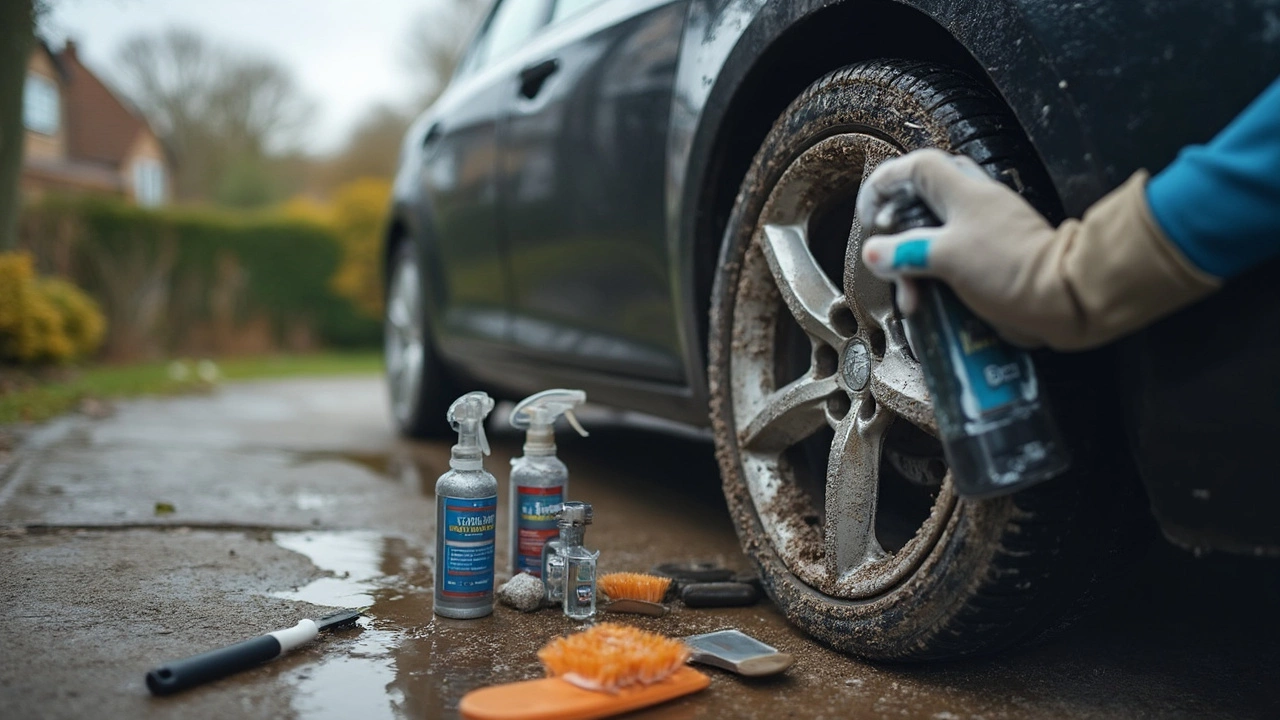Brake Dust: Why It Matters and How to Deal With It
Ever notice a gray powder on your wheels after a short drive? That’s brake dust, and it’s more than just a visual nuisance. It can wear down your rims, hide scratches, and even affect braking performance if it builds up inside the calipers. The good news? You don’t need a pricey workshop to keep it under control. A few easy habits and the right tools can make a big difference.
How Brake Dust Hurts Your Wheels
Brake dust is made of tiny metal particles, carbon, and fibers that come off your brake pads when you stop. Those particles are abrasive, so when they stick to the wheel surface they act like sandpaper. Over time you’ll see dull spots, pitting, or even corrosion on alloy wheels. On painted steel rims the dust can strip clear coat and cause rust spots. It also makes it harder to spot real damage because the dust masks cracks and dents.
Another issue is heat. When brake dust accumulates in the vent slots, it reduces airflow and can cause the brakes to run hotter. Hot brakes mean more wear on pads and rotors, and in extreme cases, brake fade. So cleaning brake dust isn’t just about aesthetics – it’s about keeping your braking system healthy.
Easy Ways to Clean and Prevent Brake Dust
Start with a quick rinse after each drive, especially if you’ve been on the highway or in stop‑and‑go traffic. A garden hose or pressure washer set to a low pressure is enough to wash off the loose dust. For stuck‑on grit, use a dedicated wheel cleaner that’s safe for your wheel finish. Spray, let it sit for a minute, then scrub with a soft‑bristle brush. Rinse thoroughly and dry with a microfiber towel.
If you want to go a step further, apply a wheel protectant or sealant. These products create a thin barrier that makes dust slide off more easily and reduces the need for heavy scrubbing. Re‑apply every few months, or after a thorough wash.Consider the type of brake pads you use. Ceramic pads produce less dust than semi‑metallic ones, though they can be pricier. If you’re doing a lot of city driving, the extra cost might be worth the cleaner wheels.
Lastly, keep an eye on your wheels during regular car washes. A professional wash with a wheel‑specific brush can remove dust you might miss at home. If you notice any persistent spots, it could be a sign that the dust is starting to embed into the finish – treat it promptly to avoid permanent damage.
In short, brake dust is inevitable, but it doesn’t have to ruin your wheels or your peace of mind. A quick rinse, the right cleaner, and occasional protectant go a long way. Stick to these simple steps and you’ll keep your car looking sharp while protecting the braking system from unnecessary wear.
Wondering how to make your alloy wheels look brand new again? This article breaks down the top cleaners that actually work on stubborn dirt, brake dust, and road grime. It covers the science behind why some cleaners outperform others, tips for safe cleaning, and what to avoid if you want to protect your wheels. Get real tips from hands-on experience—not just marketing claims. Say goodbye to dull, dirty alloys for good.

